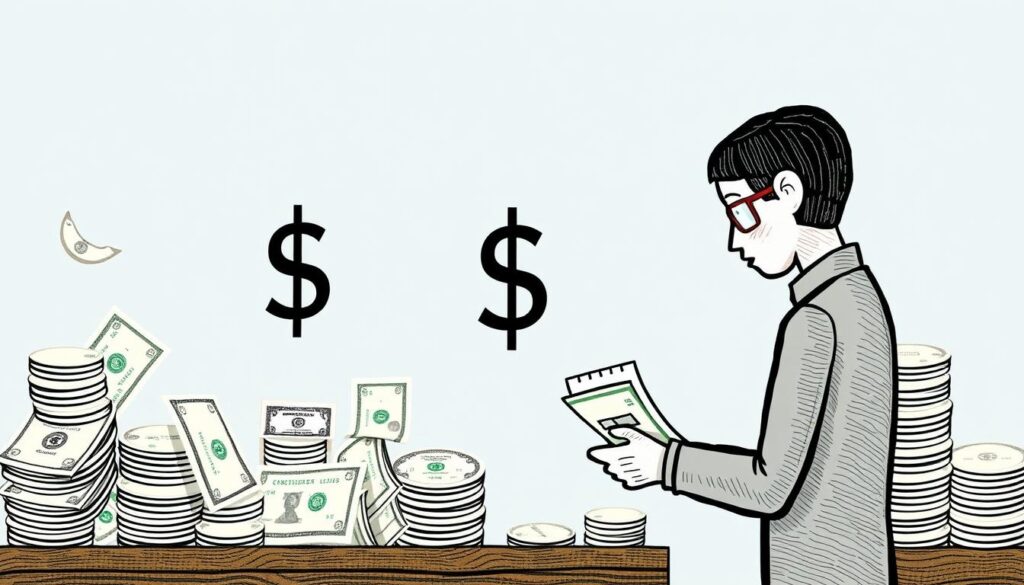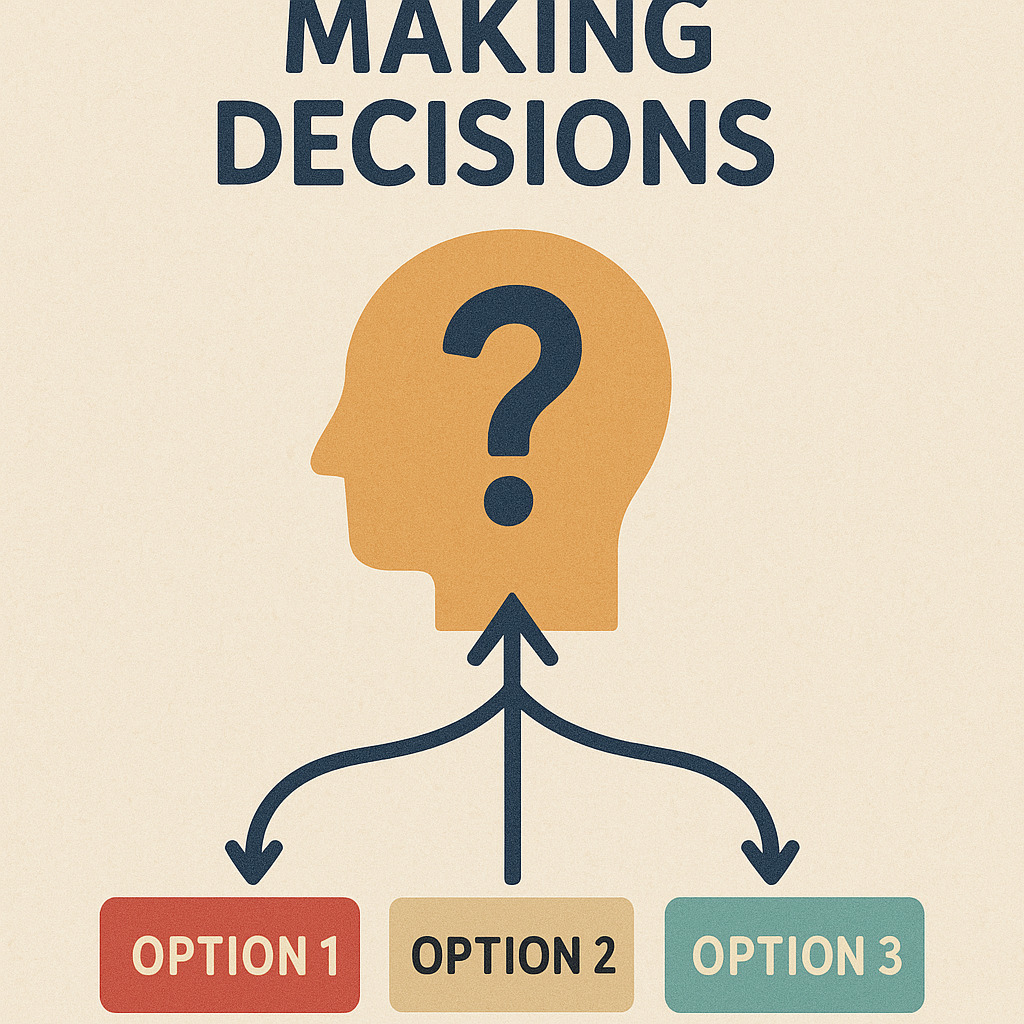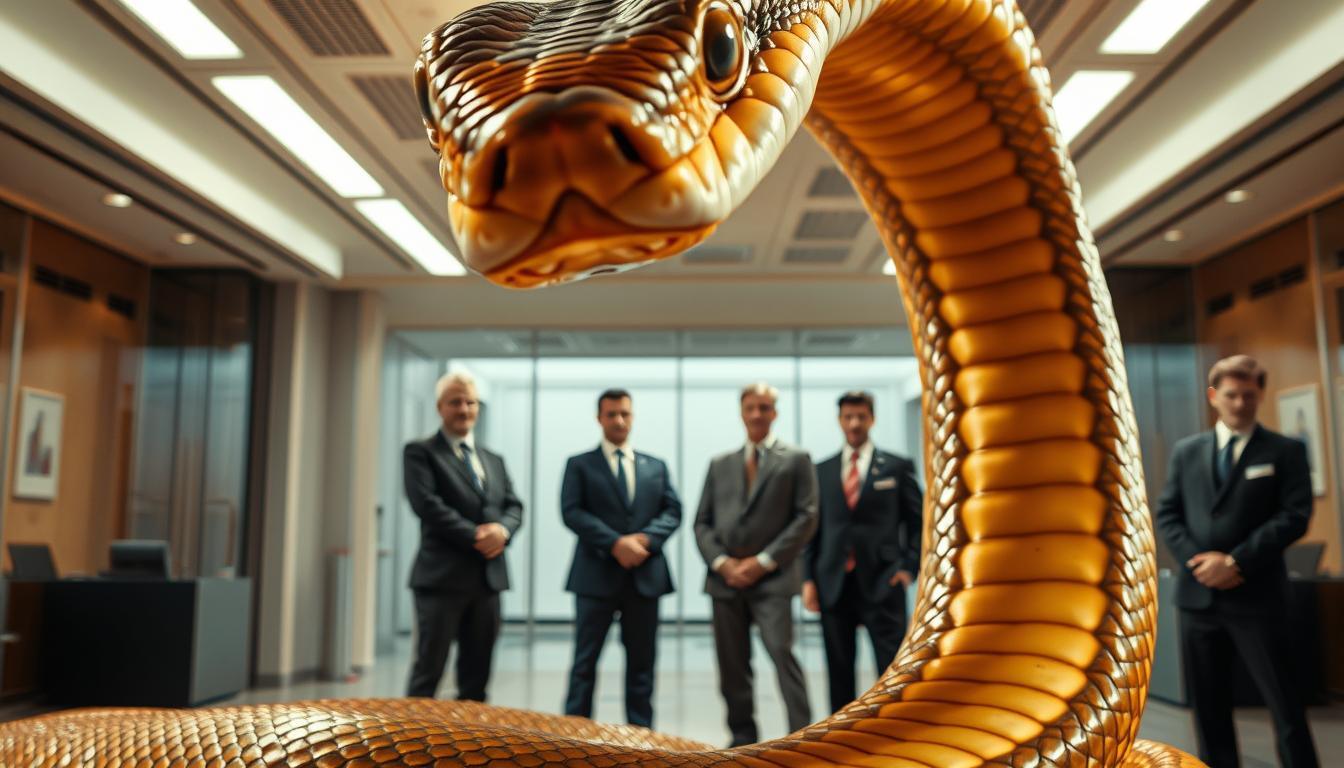Have you ever canceled plans because of a tiny chance of rain, yet skipped sunscreen on a sunny day? This common contradiction stems from a thinking pattern called the neglect of probability mental model. Coined by scholar Cass Sunstein, it describes how people often ignore real odds and probabilities when making choices, leading to a bias in decision making.
Our brains love shortcuts. Instead of crunching numbers, we rely on gut feelings. Sometimes this works. But when risks feel dramatic—like shark attacks or lottery wins—we overreact. Meanwhile, we shrug off bigger dangers like car accidents or heart disease, which is a clear example of neglecting the actual likelihood of these events.
Both mistakes come from the same root: ignoring statistical likelihoods.
Think about health scares. Someone might panic about rare vaccine side effects while smoking daily. The actual probabilities get lost in fear or hope. Why do we struggle with this? Our emotions often drown out facts.
This article will show you how to spot these blind spots. You’ll learn practical ways to balance intuition with logic. Ready to make smarter choices?
Key Takeaways
- The neglect of probability mental model makes us overestimate rare risks and underestimate common ones.
- Emotions often override factual probabilities in decision-making, affecting our perception of likelihood.
- First identified by Cass Sunstein in behavioral science research, this theory highlights the neglect of probability.
- Connects to broader base rate fallacy concepts, providing evidence of how neglect probability impacts choices.
- Affects choices in health, finance, and daily life, illustrating the effect of cognitive bias on outcomes.
Introduction to the Neglect of Probability Mental Model
Why do we fear rare events more than common dangers? This puzzle lies at the heart of a widespread thinking error and illustrates the bias of neglect probability. Our brains frequently overlook statistical evidence and probabilities when faced with vivid stories or strong emotions, leading to misjudged outcomes in decision making.
Defining the Cognitive Bias
This mental shortcut makes us misjudge risks. Imagine two scenarios: winning the lottery or getting struck by lightning. Both have tiny odds, yet people buy tickets daily while fearing thunderstorms. Researchers call this imbalance “base-rate neglect” – ignoring how often events actually occur.
| Scenario | Actual Chance | Common Perception |
|---|---|---|
| Dying in car crash | 1 in 107 | “It won’t happen to me” |
| Shark attack | 1 in 3.7 million | “Too dangerous to swim” |
| Heart disease | 1 in 6 | “Not my problem” |
Relevance in Today’s Decision-Making
Modern life bombards us with dramatic news stories. A single plane crash report might make someone avoid air travel for years. Yet that same person might eat fast food daily – a habit with far greater health risks.
This mismatch shows how feelings often override facts, illustrating the bias in our decision making process and our neglect of probability and evidence in assessing real outcomes.
Ever noticed how people prepare for zombie apocalypses in movies but skip flu shots? That’s our emotional brain at work. It’s not laziness – it’s how we’re wired. But understanding this pattern helps us make better choices by recognizing the likelihood of various events and the theory behind neglect probability.
Understanding Cognitive Biases and Probability

Ever wondered why we sometimes trust our gut over hard numbers? Let’s break down how probabilities work in everyday choices. Think of them as your personal odds calculator – they tell you what’s likely to happen based on facts, not fears.
Numbers Meet Emotions in The Neglect of Probability
Our brains love stories more than spreadsheets. A study in medical diagnosis shows why this matters. Even doctors sometimes ignore test result statistics when patients describe vivid symptoms. This clash between numbers and narratives happens to everyone.
| Situation | Statistical Reality | Common Mistake |
|---|---|---|
| Medical testing | 95% accurate result | Focusing on 5% error chance |
| Weather forecasts | 30% rain chance | Carrying umbrella daily |
| Investment choices | Historical 7% returns | Chasing “hot” stocks |
Research from decision-making studies reveals a pattern: people remember dramatic outcomes better than percentages. That’s why lottery ads show winners cheering, not the 1-in-292-million odds.
Here’s the good news – you can train your brain. Next time you face a tough choice, pause and ask: “What do the numbers really say?” Small habits like checking evidence before reacting can make big differences over time.
Key Studies That Illuminate the Bias
Remember sweating through a test you barely studied for? That gut-churning feeling shows how we often ignore actual odds. Scientists have tested this thinking blind spot through clever experiments.
Classic Experiments and Their Findings
A 1972 study revealed something odd. Participants showed identical stress levels whether facing a 1% or 99% chance of electric shocks. Their bodies couldn’t tell the difference between “almost safe” and “almost certain pain.”
| Scenario | Key Finding | Emotional Impact |
|---|---|---|
| Electric shock study | Same anxiety at both extremes | Fear overrode logic |
| Love Canal crisis | Residents ignored 0.1% risk estimates | Outcome focus beat statistics |
Researchers like Jonathan Baron found similar patterns. During the Love Canal environmental scare, people fixated on worst-case scenarios despite evidence showing minimal health risks. The mere possibility of harm felt as real as probable danger, illustrating the concept of neglect probability.
Cass Sunstein’s work explains why this happens. Strong emotions make numbers feel irrelevant. When something triggers fear or hope, our brains treat “might happen” and “will happen” as equals, a clear example of bias in how we perceive likelihood.
Ever bought lottery tickets after seeing a winner’s story? That’s this bias in action. These studies remind us: gut reactions often trump careful thinking about the actual probabilities. What life choices might you rethink with this knowledge of outcome likelihood?
Real-World Examples of Neglect in Everyday Decisions

Ever skipped a seatbelt because the drive was short? You’re not alone. Many people make similar decisions daily, ignoring clear statistics and the evidence of real probabilities. Car crashes cause 1.35 million deaths yearly, yet some still think “It won’t happen to me.”
Lottery tickets show this pattern perfectly. Though odds rival being struck by lightning twice, sales spike after news stories about winners. Why? A single success story feels more real than 292 million-to-1 odds. Our brains latch onto vivid outcomes rather than dry numbers, illustrating the bias in how we perceive likelihood.
Scam emails reveal another twist. The Nigerian prince scheme works because people focus on potential riches, not the 99.9% chance of losing money. One Colorado man lost $50,000 chasing this fantasy – a costly lesson in trusting stories over stats, showcasing a clear example of how narratives can skew our understanding of risk.
| Situation | Real Risk | Common Choice |
|---|---|---|
| Seatbelt use | 47% reduction in fatalities | “Just quick trips” |
| Lottery tickets | 1 in 292 million | “Maybe I’ll win!” |
| Email scams | 0.1% success rate | “What if it’s real?” |
These examples highlight a gap we all face: knowing facts versus acting on them. Ever bought something because an influencer’s story moved you, despite poor reviews? That’s your emotional brain overriding logic.
Recognizing these patterns helps bridge that divide. When decisions feel urgent, pause and ask: “Am I reacting to numbers or narratives?” Small shifts in thinking can lead to safer, smarter outcomes.
Neglect of Probability Mental Model in Finance and Risk Management
Ever bought a stock because everyone was talking about it, only to watch it crash? This happens when financial choices get swayed by hype instead of hard data.

Money decisions often hinge on stories rather than stats – a costly blind spot.
Finance: Misjudging Risk Versus Reward
Investors sometimes act like gamblers at slot machines. They chase “the next big thing” while ignoring actual odds. Take startup investments: 90% fail within five years, yet many pour money into unproven ventures. Why? Potential jackpots feel more real than failure rates.
A classic example of the neglect of probability mental model comes from cognitive biases in investing. During the crypto boom, people mortgaged homes to buy Bitcoin, focusing on millionaire stories – not the 80% price drops that followed. Emotional excitement drowned out rational analysis.
Risk Management Techniques and Tools
Smart money managers use math to counter gut reactions. Monte Carlo analysis runs thousands of simulations to show possible outcomes and their likelihoods. It’s like weather forecasting for investments – showing sunny days and storms ahead.
Professor Aswath Damodaran’s “Probabilistic Margin of Safety” framework helps too. Instead of guessing, it calculates exact safety buffers based on real-world data and evidence. Think of it as a financial seatbelt – preparing for sudden stops and mitigating bias in decision-making.
| Old Approach | Modern Solution | Impact |
|---|---|---|
| Gut-feel investing | Monte Carlo simulations | Sees multiple futures |
| Fixed predictions | Probability ranges | Accounts for unknowns |
| All-or-nothing bets | Margin of safety | Reduces crash damage |
Next time you make money moves, ask: “Am I following facts or fairy tales?” Small shifts toward evidence-based decisions can protect your wallet from costly emotional errors.
Psychological Perspectives on Risk and Uncertainty

Why does a single news story sometimes scare us more than decades of data? Our minds play tricks when facing uncertainty. Emotions act like tinted glasses, coloring how we see potential dangers.
Emotional Impact on Probability Evaluation
Fear changes math. After 9/11, many Americans avoided planes despite knowing the 1-in-11-million crash odds. Car trips felt safer, though driving carries 100x greater risk. This discrepancy highlights the likelihood of various outcomes. Psychology explains this mismatch: vivid stories overpower abstract numbers.
Researchers found tragic news spikes risk misjudgments. Reading about rare tragedies makes people overestimate similar events by 74%. This evidence shows how our perception of probability can be skewed. Shark attack reports? Beach visits drop. Lottery winner interviews? Ticket sales jump. Our brains treat memorable stories as truth.
| Situation | Real Odds | Emotional Response |
|---|---|---|
| Plane crash fears | 0.00001% chance | Massive travel changes |
| Texting while driving | 6x crash risk | “I can handle it” |
| Powerball tickets | 1 in 292 million | “Maybe tonight!” |
Media amplifies this effect. Networks replay shocking events, making rare risks feel common. Ever noticed how crime shows make neighborhoods seem dangerous? That’s psychology in action – repeated images create false frequency perceptions.
So why do some situations feel scarier than they are? Our survival instincts prioritize caution over calculators. But awareness helps. Next time anxiety strikes, ask: “Am I reacting to facts or feelings?” Small pauses let logic balance emotion.
Practical Strategies to Combat Cognitive Bias in Decision Making

Ever chosen a long line because it looked faster, only to wait longer? Our brains often trick us when making decisions. But simple tools can help cut through the fog. Let’s explore two powerful ways to sharpen your choices.
Improving Probability Literacy
Start by playing “numbers detective.” When facing a tough choice, ask: “What’s the actual success rate?” A security officer once found 9/10 USB drives contain malware – that fact changed how they handled unknown devices. Small data checks create big clarity about the likelihood of different outcomes.
Try this three-step method:
- Write down possible outcomes
- Research historical likelihoods
- Compare emotional reactions to stats
Remember Tom Cagley’s IT teams? They reduced project failures by 40% using Monte Carlo simulations. You don’t need complex math – even basic probability making decision tools help in assessing various probabilities of success.
Implementing Decision Frameworks
Structures beat guesswork. The LEX method sorts options by most important factors first. Like choosing a car: safety > price > color. Simple, yet effective.
| Old Habit | Better Approach |
|---|---|
| Quick guesses | Decision trees |
| Either/or thinking | Probability ranges |
| Following trends | Margin of safety |
What small change could make your next choice smarter? Maybe pausing to sketch a quick pros/cons list. As Rottenstreich’s research shows: structured ways of thinking help override our natural tendency to ignore odds.
Start today. Keep a “decision journal” for one week. You’ll spot patterns in your biases – and gain power to choose differently. After all, better choices begin with better habits to combat the neglect of probability.
The Impact on Public Policy and Legal Decisions

Have you ever wondered why some laws seem driven more by fear than facts? Governments often craft rules based on vivid what-if scenarios rather than statistical reality. After 9/11, airport security spending skyrocketed – even though driving to the airport remained statistically riskier than flying.
This gap between perceived threats and actual odds shapes many policies we live with today, often ignoring the true probabilities of various events and their outcomes.
When Fear Outpaces Facts
Lawmakers sometimes treat rare events like certain disasters. The 1958 Food Additives Amendment banned cancer-causing chemicals – a good idea in theory. But the rule didn’t consider exposure levels or the probability of harm.
A substance causing 1 extra cancer case per billion people got treated the same as one causing 1,000 cases, despite the vastly different likelihood of each outcome. This “better safe than sorry” approach can waste resources that save more lives in other ways.
| Policy Approach | Emotional Driver | Statistical Reality |
|---|---|---|
| Post-9/11 security | Plane hijacking fears | 1 in 11 million crash odds |
| COVID lockdowns | Pandemic anxiety | 98% survival rate |
| School shooting drills | Media coverage | 1 in 3 million student risk |
Balancing Act in Lawmaking
Cass Sunstein’s work shows why this happens. People demand action after shocking events, even when risks stay tiny. Politicians then face pressure to “do something” – often creating rules that look tough but help little. Remember the TSA’s $3 billion airport scanners? Studies found they missed 95% of test weapons.
Here’s the twist: good decisions need both hearts and calculators. While emotions alert us to dangers, numbers show the best way to focus on the likelihood of real threats. Next time you hear about new regulations, ask: “Is this solving real problems or just calming fears?” Small shifts in public thinking could lead to smarter policies over time.
Exploring the “neglect of probability mental model”

Ever avoided a park bench because of a bee story you heard once? This instinct reveals how we handle uncertainty. Our brains often swap calculators for caution tapes when evaluating risks. Researchers call this pattern “likelihood blindness” – seeing threats as either certain or impossible, with no middle ground. This way of thinking can lead to skewed perceptions of risk.
Take COVID-19 responses. Though most cases were mild, 63% of Americans in 2020 believed hospitalization would happen if infected. This gap between numbers and nerves shows our tendency to magnify rare dangers and misjudge the true probability of adverse events. Even in Sweden – where traffic deaths are rare – only 18% use seatbelts on buses despite laws requiring them.
| Situation | Actual Risk | Public Perception |
|---|---|---|
| Vaccine side effects | 0.001% | “Too dangerous” |
| Car crash fatalities | 1 in 93 | “Won’t happen to me” |
| Email scam success | 0.1% | “Could be my ticket” |
Why do we struggle with probability making? Nobel winner Daniel Kahneman found our brains treat “1% chance” and “50% chance” similarly when emotions run high. During the 2021 crypto boom, investors ignored the 80% failure rate of new coins, chasing the possible outcome of striking it rich. This highlights how the perceived probability of an event can skew our decision-making.
A revealing experiment showed people ignoring base rates even after 200 practice rounds. When told a medical test had 85% accuracy, most still believed positive results meant certain illness – not the real 41% likelihood. This effect lingers until clear feedback bridges the gap between guesses and facts, emphasizing the importance of understanding the true likelihood of various events.
Here’s the twist: better choices start with simple checks. Next time you face a risky decision, ask: “Am I reacting to numbers or nightmares?” Small pauses to consider real odds can transform how you navigate our world of uncertainties.
Conclusion
Ever passed on a great opportunity because “something might go wrong”? Our brains often trip over invisible hurdles when weighing risks and assessing the true likelihood of outcomes. The stories we tell ourselves—fueled by fear or hope—frequently drown out the numbers that matter most. That’s the neglact of probability mental model.
Studies reveal a clear pattern: choices grounded in evidence lead to better outcomes. From seatbelt use to stock picks, people who check facts before acting tend to avoid costly mistakes. Research shows even basic training in Bayesian updating methods can sharpen decision-making skills within weeks.
Understanding cognitive biases gives you an edge. Like that Colorado man who lost $50,000 to email scams, we all face moments where emotions cloud logic. But here’s the good news: simple habits work. Pause before reacting. Ask “What do the stats say about the likelihood of success?” Compare gut feelings with historical data.
Small changes create big shifts. Start today by questioning one assumption—maybe that “safe” investment or “risky” career move. Over time, these mindful checks become second nature. After all, better choices aren’t about perfection. They’re about practice.
What instance this week could benefit from a quick probability check? Your next answer might just change everything.


